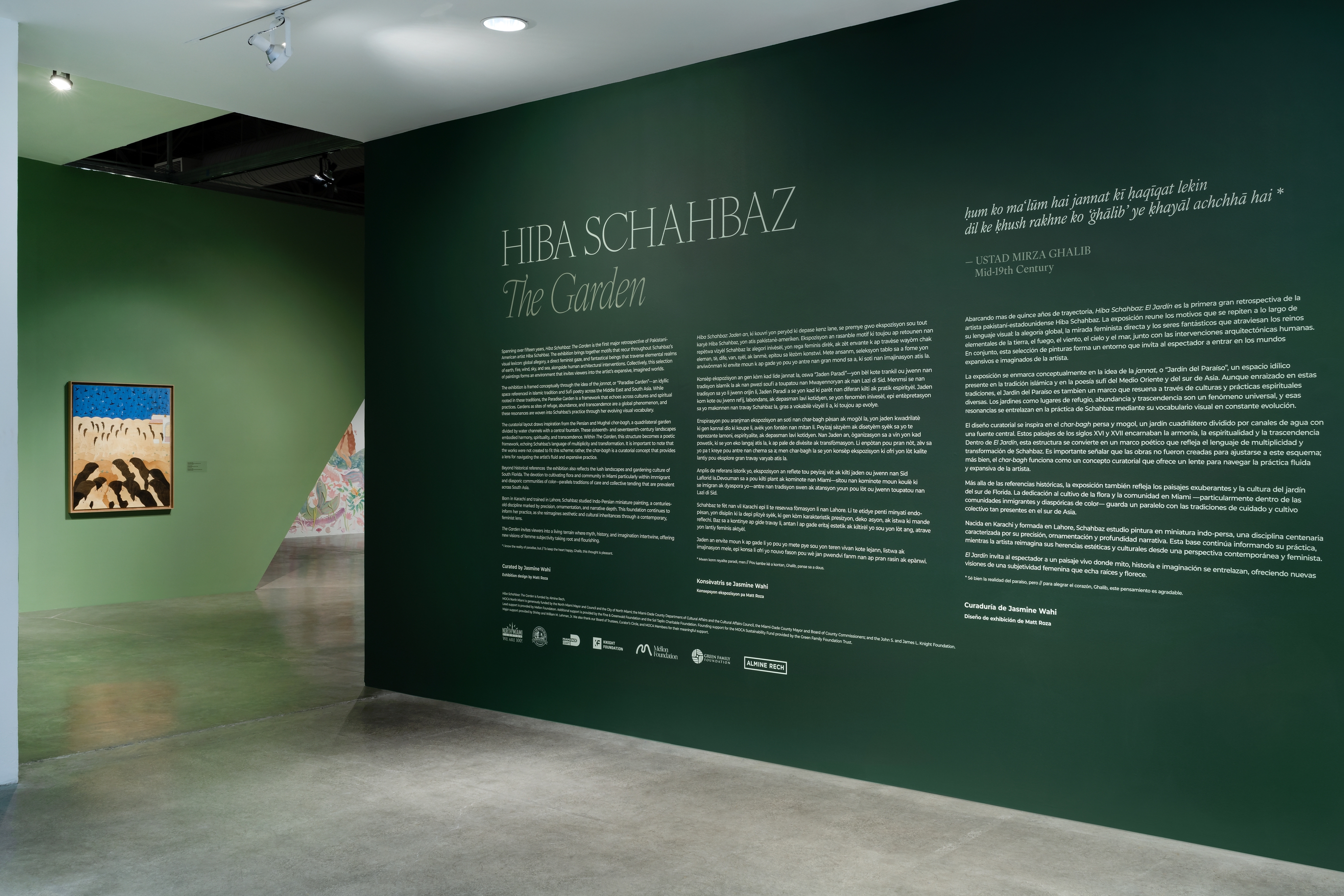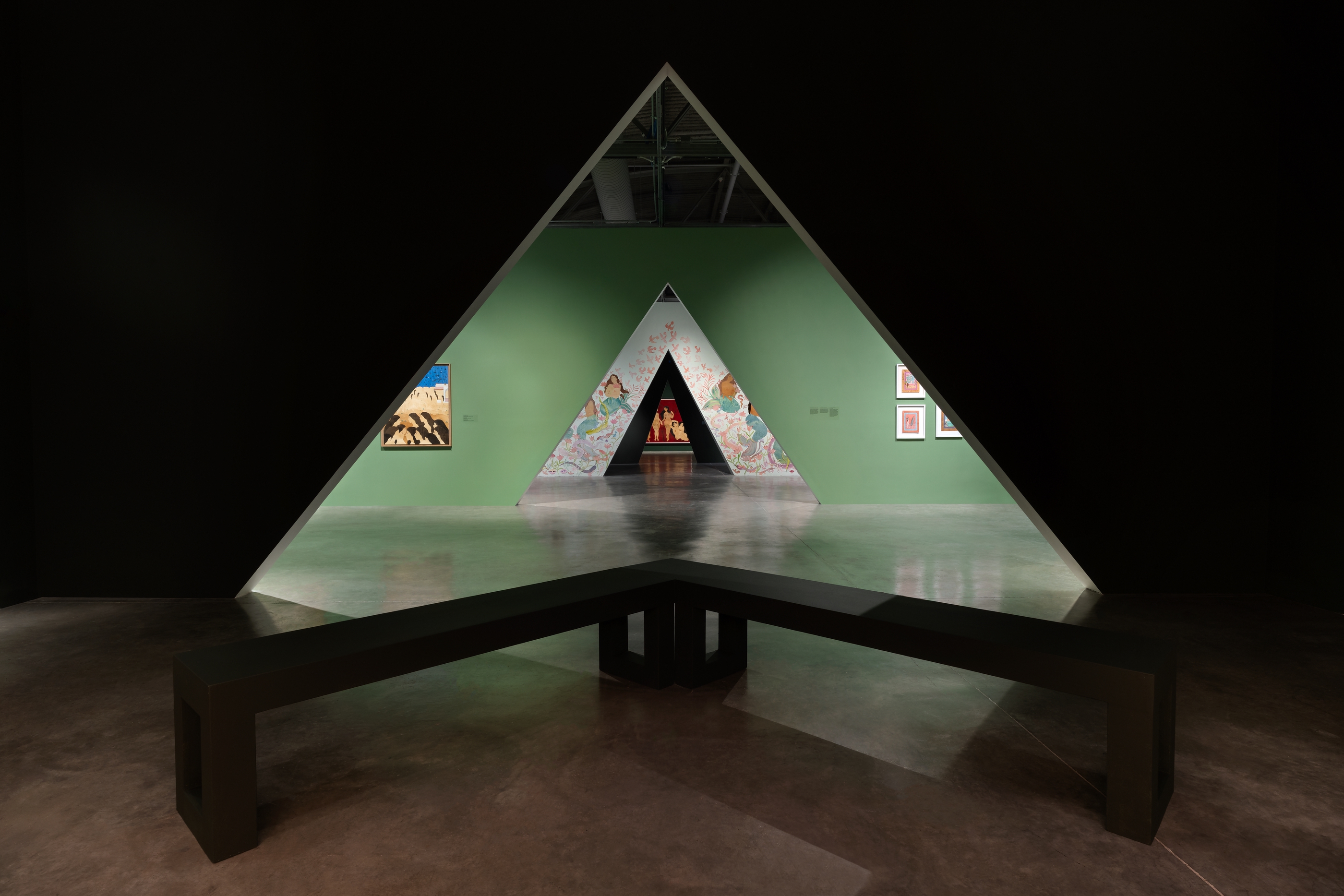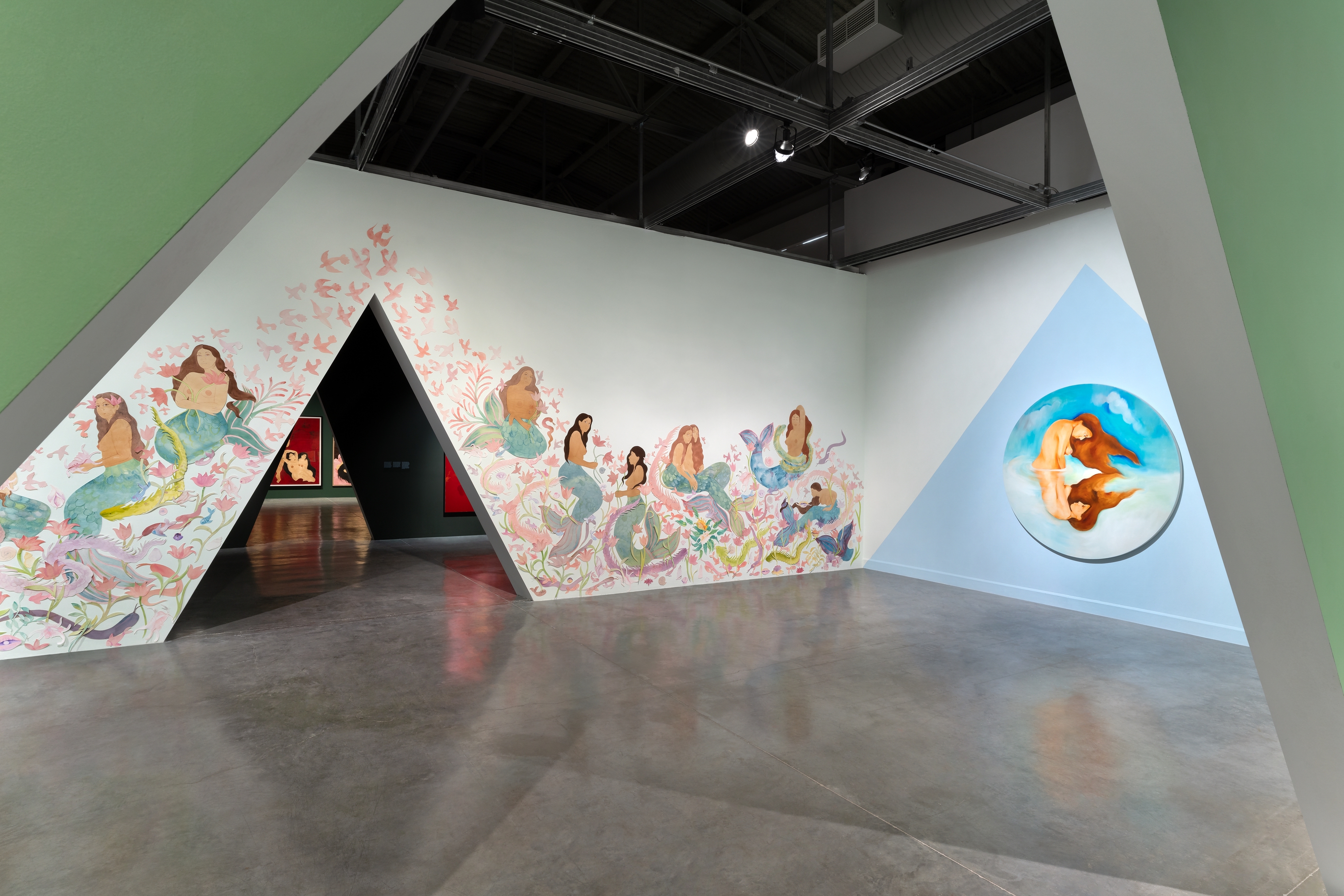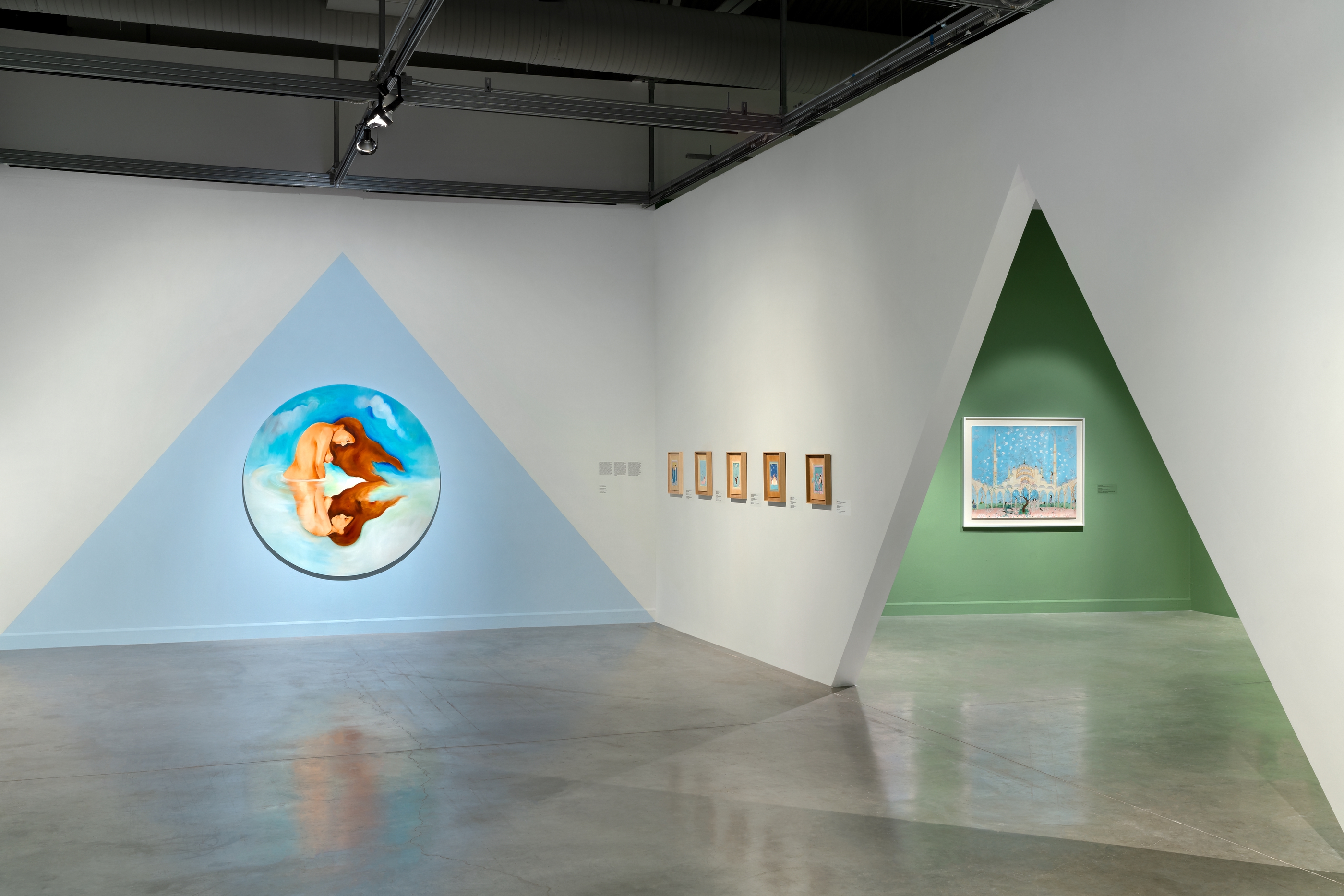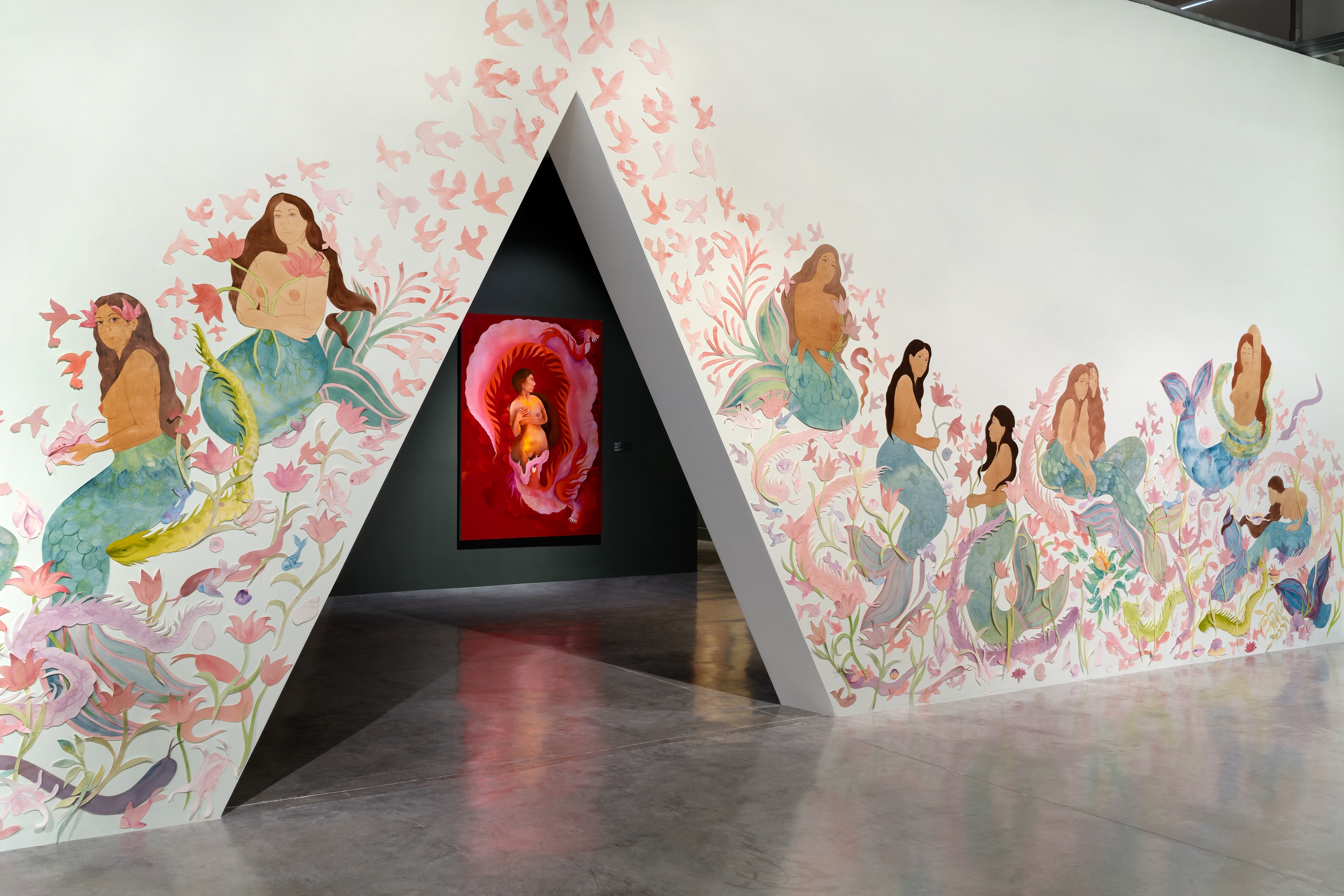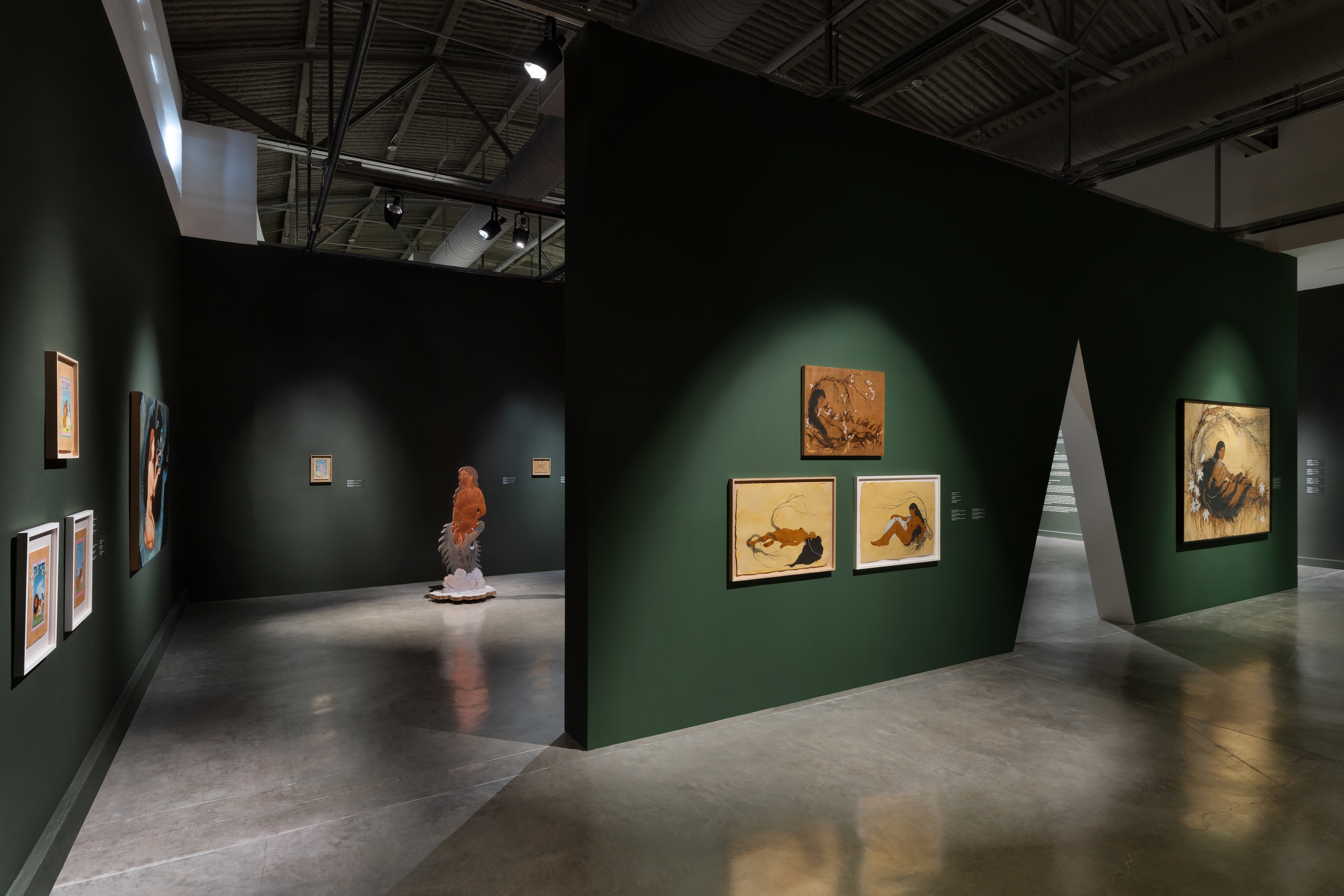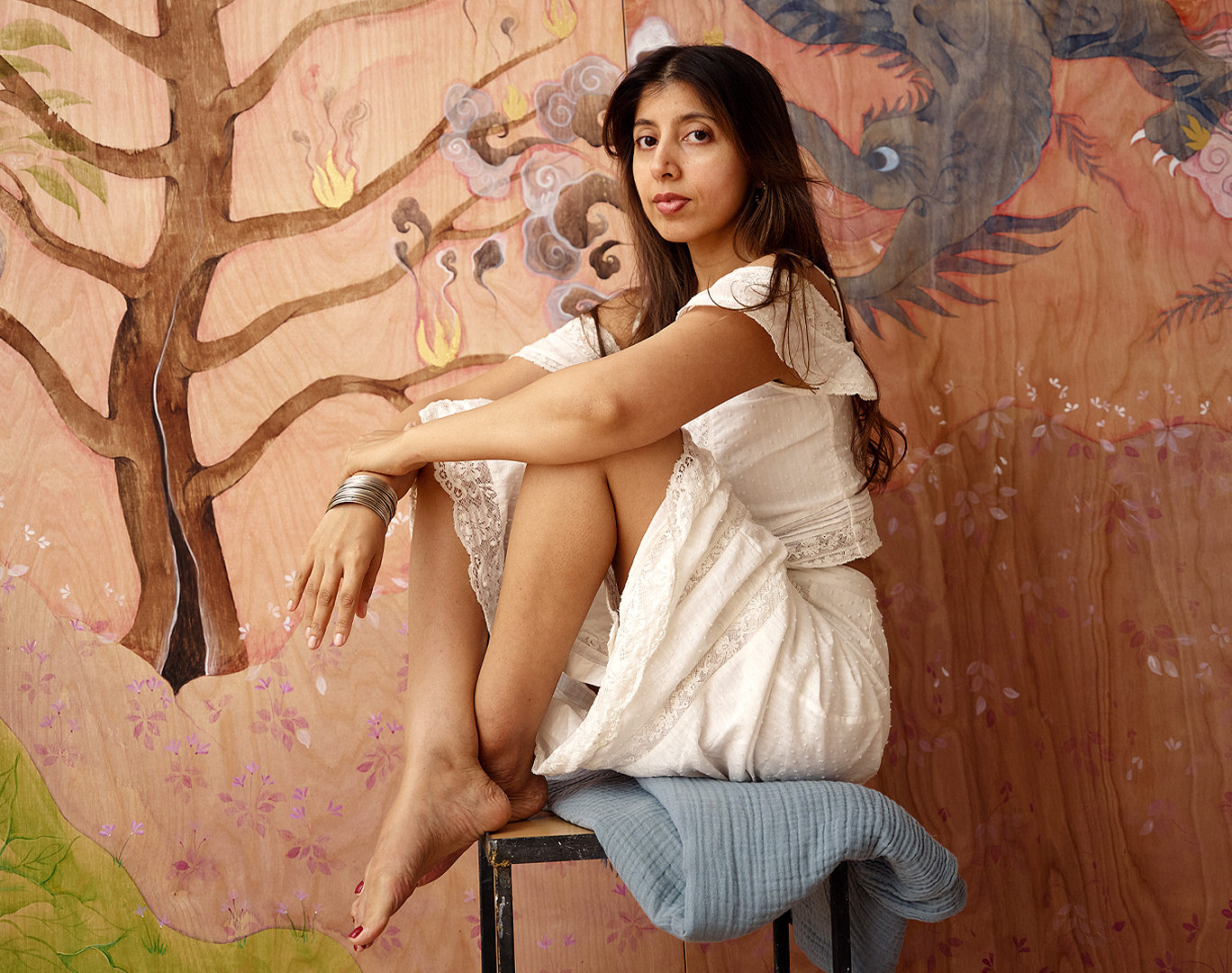Rezime
ḥum ko maʿlūm hai jannat kī ḥaqīqat lekin
dil ke ḳhush rakhne ko ‘ġhālib’ ye ḳhayāl achchhā hai
- Ustad Mirza Ghalib, Mid-19th Century
I know the reality of paradise, but
To keep the heart happy, Ghalib, this thought is pleasant.
- Ustad Mirza Ghalib, Mid-19th Century
Spanning over fifteen years, Hiba Schahbaz: The Garden is the first major retrospective of Pakistani-American artist Hiba Schahbaz. The exhibition brings together motifs that recur throughout Schahbaz’s visual lexicon: global allegory, a direct feminist gaze, and fantastical beings that traverse elemental realms of earth, fire, wind, sky, and sea, alongside human architectural interventions. Collectively, this selection of paintings forms an environment that invites viewers into the artist’s expansive, imagined worlds.
The exhibition is framed conceptually through the idea of the jannat, or “Paradise Garden”—an idyllic space referenced in Islamic tradition and Sufi poetry across the Middle East and South Asia. While rooted in these traditions, the Paradise Garden is a framework that echoes across cultures and spiritual practices. Gardens as sites of refuge, abundance, and transcendence are a global phenomenon, and these resonances are woven into Schahbaz’s practice through her evolving visual vocabulary.
The curatorial layout draws inspiration from the Persian and Mughal char-bagh, a quadrilateral garden divided by water channels with a central fountain. These sixteenth- and seventeenth-century landscapes embodied harmony, spirituality, and transcendence. Within The Garden, this structure becomes a poetic framework, echoing Schahbaz’s language of multiplicity and transformation. It is important to note that the works were not created to fit this scheme; rather, the char-bagh is a curatorial concept that provides a lens for navigating the artist’s fluid and expansive practice.
Beyond historical references, the exhibition also reflects the lush landscapes and gardening culture of South Florida. The devotion to cultivating flora and community in Miami—particularly within immigrant and diasporic communities of color—parallels traditions of care and collective tending that are prevalent across South Asia.
Born in Karachi and trained in Lahore, Schahbaz studied Indo-Persian miniature painting, a centuries-old discipline marked by precision, ornamentation, and narrative depth. This foundation continues to inform her practice, as she reimagines aesthetic and cultural inheritances through a contemporary, feminist lens.
The Garden invites viewers into a living terrain where myth, history, and imagination intertwine, offering new visions of femme subjectivity taking root and flourishing.
Hiba Schahbaz: The Garden is curated by Jasmine Wahi.
Installation images by Zachary Balber

ḥum ko maʿlūm hai jannat kī ḥaqīqat lekin
dil ke ḳhush rakhne ko ‘ġhālib’ ye ḳhayāl achchhā hai
- Ustad Mirza Ghalib, Mid-19th Century
I know the reality of paradise, but
To keep the heart happy, Ghalib, this thought is pleasant.
- Ustad Mirza Ghalib, Mid-19th Century
Spanning over fifteen years, Hiba Schahbaz: The Garden is the first major retrospective of Pakistani-American artist Hiba Schahbaz. The exhibition brings together motifs that recur throughout Schahbaz’s visual lexicon: global allegory, a direct feminist gaze, and fantastical beings that traverse elemental realms of earth, fire, wind, sky, and sea, alongside human architectural interventions. Collectively, this selection of paintings forms an environment that invites viewers into the artist’s expansive, imagined worlds.
The exhibition is framed conceptually through the idea of the jannat, or “Paradise Garden”—an idyllic space referenced in Islamic tradition and Sufi poetry across the Middle East and South Asia. While rooted in these traditions, the Paradise Garden is a framework that echoes across cultures and spiritual practices. Gardens as sites of refuge, abundance, and transcendence are a global phenomenon, and these resonances are woven into Schahbaz’s practice through her evolving visual vocabulary.
The curatorial layout draws inspiration from the Persian and Mughal char-bagh, a quadrilateral garden divided by water channels with a central fountain. These sixteenth- and seventeenth-century landscapes embodied harmony, spirituality, and transcendence. Within The Garden, this structure becomes a poetic framework, echoing Schahbaz’s language of multiplicity and transformation. It is important to note that the works were not created to fit this scheme; rather, the char-bagh is a curatorial concept that provides a lens for navigating the artist’s fluid and expansive practice.
Beyond historical references, the exhibition also reflects the lush landscapes and gardening culture of South Florida. The devotion to cultivating flora and community in Miami—particularly within immigrant and diasporic communities of color—parallels traditions of care and collective tending that are prevalent across South Asia.
Born in Karachi and trained in Lahore, Schahbaz studied Indo-Persian miniature painting, a centuries-old discipline marked by precision, ornamentation, and narrative depth. This foundation continues to inform her practice, as she reimagines aesthetic and cultural inheritances through a contemporary, feminist lens.
The Garden invites viewers into a living terrain where myth, history, and imagination intertwine, offering new visions of femme subjectivity taking root and flourishing.
Hiba Schahbaz: The Garden is curated by Jasmine Wahi.
Installation images by Zachary Balber


.png)



.png)

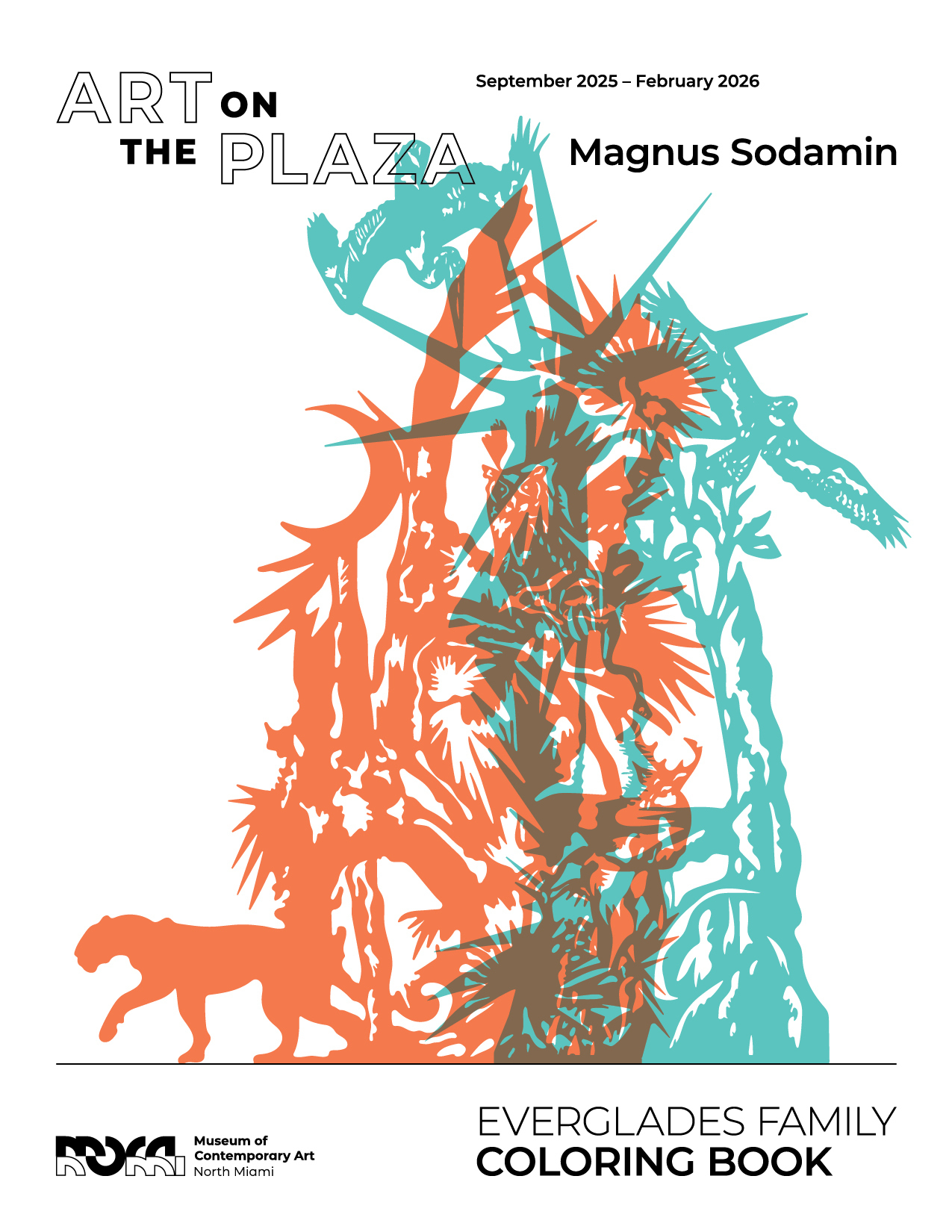
.png)
.png)
.png)
.png)
.png)
.png)
.png)
.png)
.png)
.png)
.png)
.png)
